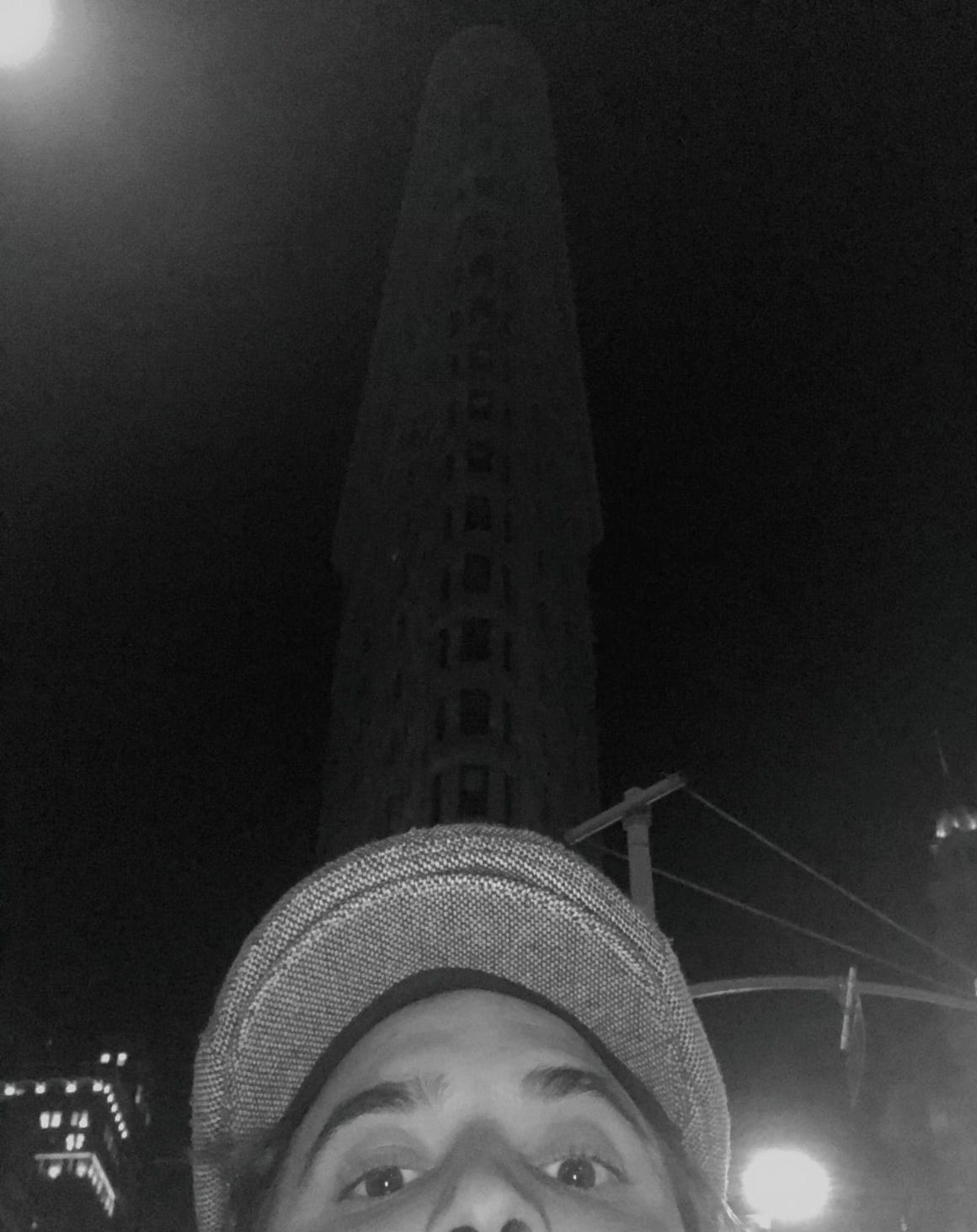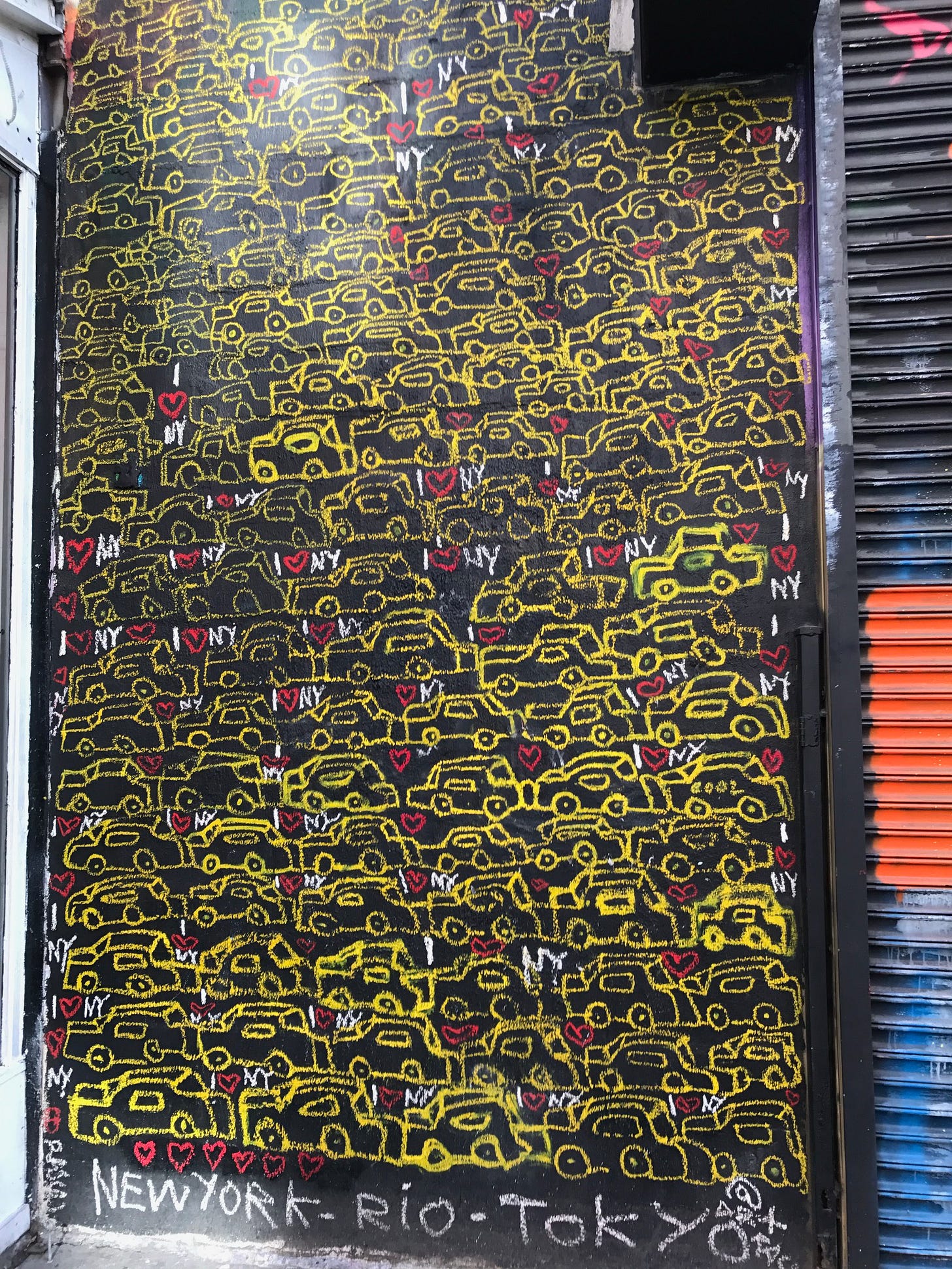If Alleyways, Pt. 1 was about our personal alleys, then this is what happens when we take those raw parts of our life, normally stashed in the back, and dump them in the front yard. Better out than in, as they say.
A few years ago, I was in New York City. And what better place to explore this conversation than a place with no alleyways at all. There’s nothing like 30,000 people squeezed into each square mile to amplify human nature—and, specifically, how our physical environment shapes us.
Realists might point out the most visible byproduct of such urban planning: garbage piled on the sidewalk. But I see that as collateral damage to some more fascinating stuff that winds up on the street.
On that trip, after an afternoon meeting spit me out in SoHo, I walked twenty-two blocks back to the hotel, along the way passing: a woman selling vintage paperbacks on a folding table, a heavy metal band thrashing in Alphabet City, chessmen hustling in Union Square, Hare Krishnas chanting beside them with harmonium and bells, and a farmers’ market, to name a few encounters. And this says nothing of the one-of-a-kind stores, shops, and restaurants lining every street.
At the outset of the journey, I asked a municipal worker emptying trash bins: what’s a good direction to go? He said, Every direction! Had I taken another path, I have a feeling I’d be writing a whole other list just as interesting.
People talk about the energy of New York (so much so it now seems like a cliché) but the place is absolutely electric. I’d say that’s directly born from a few million people putting it all out there, a sampling of whom I passed on the street, saying to themselves, “fuck it, let’s give it a go.”
One of the things that often winds up in the alley is ambition. Around my small town in Colorado, this could be as mundane as an old Cadillac waiting twenty years for a wrench / a greying pile of lumber that might someday be a chicken coop, or a playhouse, or a raised garden bed / or a neglected shed that would make a great writing studio.
Without alleys, though, there is no place to hide yourself, or your ideas . . . you must act! Forced to expose what otherwise might be stashed in the alley, a quality develops of realness, rawness, truth. In other words, fertile ground for inspiration.
It’s no great surprise that so many artists have found their muse in New York: Bob Dylan, Jean-Michel Basquiat, Colson Whitehead, Keith Haring, KRS-One, Patti Smith, Thelonious Monk . . . the list goes on and on, forming a cycle of creativity that keeps NYC a cultural bellwether, generation after generation.
But creation / invention / reinvention, these things have arguably been woven into the fabric of New York City since the beginning. Eager people with novel ideas and unique perspectives have been flowing to and through NYC for centuries.
As a kid, I visited Ellis Island with my family—that one-time hub of immigration—and found my great-grandparents’ names in the manifest from the late 1800s. They escaped the pogroms in Russia and found a fresh start stateside, beginning right there in New York harbor.
In this globalized world of today, where we only need wifi to make a video call from another country, it’s hard to imagine the kind of cultural distinction coalescing on Ellis Island. A glimpse into this era, these photos of people emigrating in their finest traditional clothes leave me awestruck. It’s plain to see they were putting it all out there—and so the tradition continues.
It was the promise of freedom that drew people to New York City a hundred-fifty years ago, and the city has never lost that profound sense of possibility. Maybe, behind all the history, it’s those missing alleyways which keep it feeling strong.
Either way, they certainly put the Statue of Liberty in the right city.
Here’s to putting it all out there, alleyways or not.
- Martin




